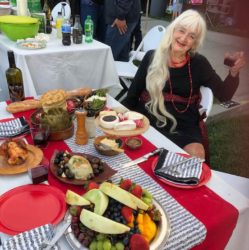by D.L Yuen
According to one tradition, Hinamatsuri (雛祭り Doll Festival) started in 1625. The imperial court ladies of Emperor Go-Mizuno set up beautiful dolls for his daughter, Okiko, to play with during the Peach Festival season.
Okiko was born on 9 January 1624. When her father abdicated in her favor on 22 December 1629, she was only five years old. She succeeded her father as the Empress Meishō, ruled Japan for fifteen years, and then abdicated on 14 November 1643 at age 19. She was succeeded by her brother Tsuguhito, who became Emperor Go-Kōmyō.
Many political intrigues and changes occurred during her reign. Her mother was Tokugawa Masako, and the Tokugawa shogunate rose in power at this time, encroaching on much of the Imperial power.
I often think how difficult it must have been for her, being surrounded by the powerful court from the time she was a tiny girl. But there were some moments of fun.
During her reign, in 1687 “Hinamatsuri” became the official name of the holiday. Doll-makers began making elaborate and ever larger dolls for the festival, until laws were passed to restrict their size. Eventually, the hinazakari standardized to include fifteen dolls and their accessories. They are displayed on a hinadan, a stepped platform covered with a red cloth.
Today, hinazakari can be found that are small and simple or large and elaborate. Some families start small, with the emperor and empress, and add more figures each year. Some families have hinazakari that date back many generations and are cherished heirlooms.
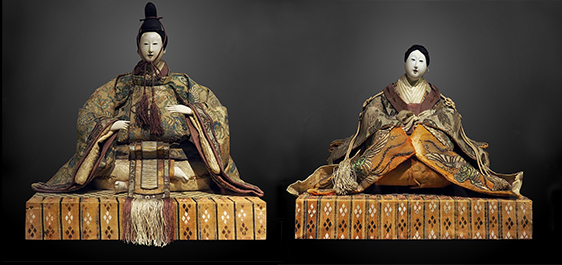
Special foods are prepared for Hinamatsuri. In general, they are made in the delicate pastel hues of spring time. Among them are:
Hina Arare (雛あられ) – A pastel and often sweeter version of the small rice crackers popularly eaten as snacks.
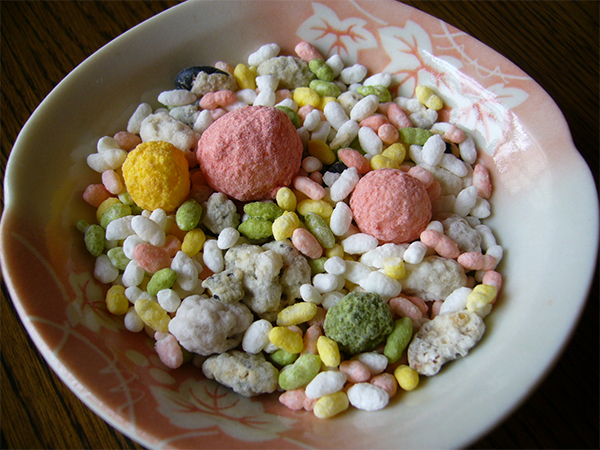
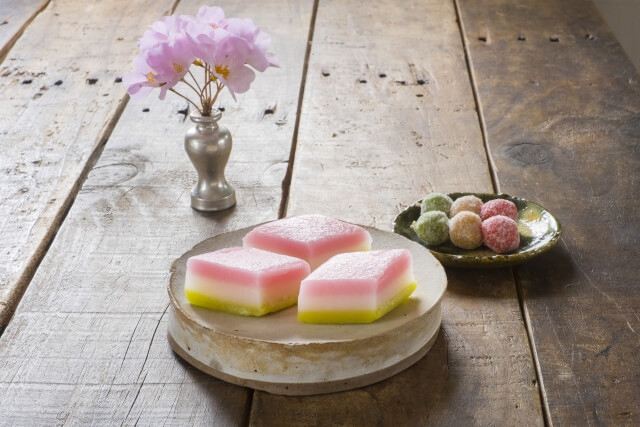
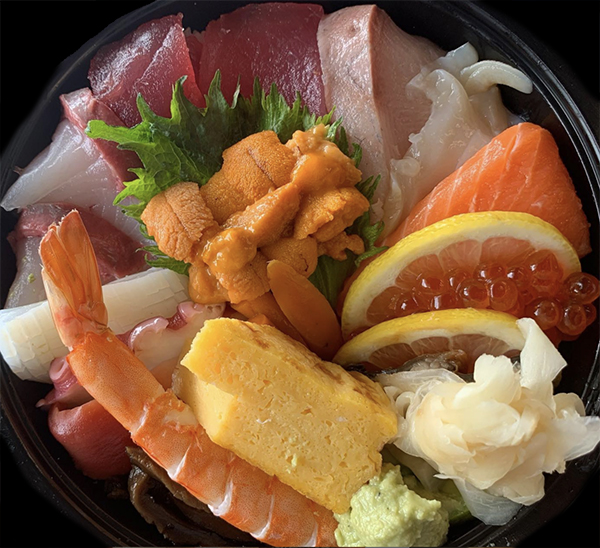
Hamaguri no Suimono (はまぐりの吸い物) – A soup made using clams. Because the clam shells close, fitting together perfectly, they represent wishes for the girl to find a husband who fits perfectly with her.
Shirozake (白酒 white sake) – A special sake made to celebrate Hinamatsuri. Today, girls are given a non-alcoholic version. But the traditional style is made by adding mirin (sweet cooking wine) to steamed mochi-gome (glutinous rice). This is thoroughly mixed and then left to ferment for a few weeks. In some areas shochu (a distilled spirit) and malted rice were added to the steamed mochi-gome.
It is said that the method of manufacturing shirozake originates in the ‘nerizake‘ brewed in the Hakata region from ancient times and that, from the Edo Period, it came to be used as an offering in the Doll’s festival, a custom from the Heian Period, in place of the peach leaves soaked in sake which had been used from the Muromachi Period.

